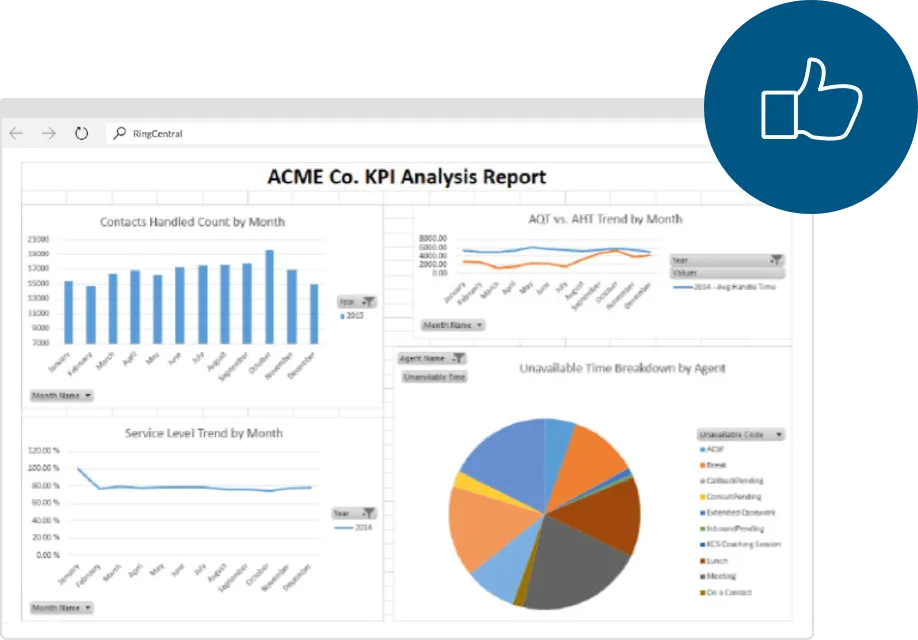
What is call queueing?

When inbound calls come into a contact center, they are typically routed to an available agent. But what happens if all of the representatives are busy helping other callers? The call is placed on hold and joins the customer calling queue, or a line, of other callers waiting for their turn to connect with a call center agent. The caller is generally greeted with a welcome message and is placed on hold with custom music playing in the background until an agent is free and somebody can answer the incoming call.
How do virtual queues work?
No one likes to sit on the phone with hold music, for what seems like forever. Virtual phone call queues note the reason for the call and collect the caller ID and phone number. When it's the caller's turn in the virtual line or a virtual receptionist becomes available, the caller receives a callback. That option eliminates the need for a caller to reach busy signals, or be put on hold, and can increase customer satisfaction, lower the call abandonment rates and improve overall call center efficiency. Studies show that call centers that offer callers a queue callback option had a lower call abandonment rate average.
How do you decrease the abandonment rate in a call center?
When people in the queue are on hold for too long, many hang-up or abandon the call before the system could use call forwarding to send the caller to an available agent. How long is too long? For some people, any amount of time on hold is too long. For 66% of callers, two minutes on hold is the breaking point, and another study revealed that 34% of people who hang up after being put on hold have no plans to call back.

What are the causes of long calling queues?
There are many reasons for long call queues. Situations that create long call queues, or call backlogs, include:
- Peak seasons
- Not enough agents
- Long call handling time
- Outdated technology
- Increased incoming call volume due to COVID-19
Peak seasons
Depending on your business, seasonality could spike in call volumes. A promotional activity can also increase the number of calls into the call center. Handling these surges can be challenging. If not controlled or rectified, caller experience ratings fall. During business phone ‘rush hours’, callers that are on hold for too long are likely to hang up, which increases your abandon rate.
Not enough agents
Long call center queues can be the result of several factors. Usually, the culprit is understaffing. There are simply not enough agents to answer all of the calls. Hiring additional representatives can help if you know in advance which days, hours, or months will have increased call volumes.
Long call handling time
Long call handle times can be caused by calls that are taking longer than expected or have longer time-to-resolution than is warranted. When calls take longer than they should, the call queue can backup, leaving customers on hold unhappy. It’s hard to say why agents can't speed up the call. Sometimes the agent may not understand the situation. Callers could constantly interrupt an agent, or the agent can’t control the talkative caller.
Outdated call center software
Outdated call center software can stymie agent efficiency. The right contact centre software has queuing features that allow agents to collect a lot of customer information before the call representative answers the call. Newer call center software technology can resolve problems that older queue software simply was not designed to handle.
Increased call volume due to COVID
Since pandemic shelter-in-place orders and other restrictions have been mandated, many call centers have seen extreme call volume spikes. Not surprisingly, many did not see this coming. Call centers with the foresight to migrate to more advanced call center technology or have been able to adopt more sophisticated call center queue solutions quickly are weathering the storm. Those that haven’t upgraded have found it nearly impossible to provide the support needed to satisfy customer expectations.
Why you should improve call queue management

When making a customer service call, there's no way around the fact that customer waits of any type in call center queues for extended lengths of time can be frustrating. Or worse, it makes customers feel like their time is not valued. These caller experiences can lead to customer defection and low customer service scores (CSAT) or complaints.
One way to improve queue call management is to shorten queue times and improve the caller experience. That’s the primary reason to take a good look at the technology and tools that are designed to help you manage inbound call centers and its agents. Shorter hold times can result in reduced waiting times and costs, which can make your call center more profitable.
It would also be prudent for call center managers to look at agent performance and training. Are your representatives skilled at facilitating speedy resolutions? Is a lack of call center queueing technology preventing calls from being properly routed? Is the call queue backup leaving agents frustrated or causing poor morale?
Here’s why it is important to improve call queueing.
Increase customer satisfaction
The statistics are sobering. A whopping 89% of customers won’t hesitate to take their business elsewhere after enduring an unsatisfactory customer experience. According to experts, 13% will spread negative news to 15 or more people if a customer is not satisfied.
Consistently ensuring a high level of customer satisfaction may be the single most important determining factor in business growth, continuity and, ultimately, your company's success.
Improve agent productivity and morale
Agents want to feel valued, but that can be difficult when they’re on the receiving end of a customer’s frustration due to extended waiting times. When your call representatives are stressed or continuously under pressure, morale sinks, call quality is affected, and productivity can tank. To mitigate these problems, you can lower the call load by adding more agents or upgrading your call center software with best-in-class call queue management features.
Save on call center operational costs
Wages make up one of the largest expenses of a call center. But how do you maintain a balance of agents to call volume, especially when too often you have too many callers in the queue? With customer satisfaction, the number one goal of any call center, how do you keep customer support humming while keeping expenses under control? Without the right call management solution, call flow optimization can be an impossible task.
How do you improve call queueing management?

The goal of cloud contact center solutions should be to drive higher productivity, better customer experience, and foster agent engagement to maximize your investment in people and technology. Workforce management (WFM) practices are proven to help manage call queues and staff properly to match seasonal, daily, or hourly call volumes.
Contact center solutions like RingCentral can help you manage call queues better with technology that modernizes and automates advanced functions, including workforce engagement, interactive voice response (IVR), skills-based call routing, call monitoring, predictive dialers, and analytics in one communications cloud phone system to empower agents to provide the service your customers deserve.
Here are the RingCentral features that can help manage call queues.
Workforce management (WFM)
The primary benefit of using WFM tools is to align agent schedules with call volumes, so there are enough agents available when there is a massive influx of calls and the right number of representatives when call volumes are lower. Achieving this balancing act helps lower employee costs, makes agents happy, and keeps customers satisfied by reducing the time spent in call queues.
RingCentral WFM helps you optimize agent scheduling by using historical data to make call volume predictions. The queue software can also offer insights into which agents have the skill sets to help customers resolve issues faster. In summary, aligning agent schedules with call volume, agent expertise with customer needs, and lessening overtime pay due to poor scheduling are all necessary to lower operational costs.
Interactive voice response (IVR)
An IVR tool automates call routing and often offers menu options for self-service that are handled by an auto attendant. Some might call this format a phone tree. Usually, the caller will reach a main greeting and inquiries related to the information you might be seeking.
By collecting your information or your answers to questions such as 'when was the date of my last payment,' the system can use that data to direct your call to an agent or the information you requested (hours, location, etc.).
IVR helps agents by reducing the number of calls they need to answer, which gives them more time to resolve more complex customer issues. System status updates can also empower customers to find the information they may be looking for without waiting to talk to an agent.
Here are some of the queuing features, functionality, and information options callers could expect when they connect to an IVR system:
- Find out account balance details
- Get information on payment dates
- Refresh/create PIN numbers or update/change passwords
- Request pricing on products and services
- Take surveys or join waitlists
- Check balances, transfer money
- Confirm billing charges
- Get help or technical support
- Reach a salesperson to upgrade a service
With a modern cloud phone system and cloud contact center solutions like RingCentral, IVR software is integrated into the system. You don’t have to handle anything or have a telephony expert on staff. By definition, everything required to operate and manage the technology components— like telephony, databases, and servers—is taken care of by the cloud provider, making it less expensive than other traditional IVR solutions.
Benefits of an IVR include:
- Faster Customer Service
- More professional business impressions
- Higher morale and call agent satisfaction
- Around the clock customer support
- Fewer errors due to automated processes
- Better customer experience
IVR from providers like RingCentral can also stretch your cloud contact center's capabilities by integrating with other apps such as your CRM system, payment gateway, and back-office and phone queue systems that allow customers to access their account information.
Another aspect of IVR is its intelligent call routing feature that enables organizations to align call center agents with specific skills or expertise. The IVR menu options help the phone queue system understand why the person is calling and ascertain what skills would be needed to remedy the situation by the extension chosen, then automatically call that particular representative.
Once acknowledged, the automatic call distribution will route calls to the most qualified agent, which is considered skills-based routing (SBR).
Skills-based routing
As mentioned above, when a call comes in, SBR directs the call to an agent with the experience to handle the question, request, or problem best rather than send that call to the next available agent. The goal of this approach is to shorten call queues and increase customer satisfaction.
For SBR to be an effective call solution, there needs to be parameters or call routing rules created. Usually, a manager writes rules to reflect an agent’s proficiency, understanding, and expertise to increase the odds of resolution of a customer’s first call. Fast and efficient outcomes eliminate the need for the caller to make repeated contact to get help.
For instance, financial institutions might prepare one set of agents to set up new accounts and other agents to process loans. Multi-skilled agents can handle a variety of call concerns from new to and loan approvals.
Benefits of SBR are many and include:
- Reducing the average call handle time
You could have callers assigned to agents based on certain factors like the caller’s phone number, call history, or previous options chosen on the IVR system. This approach puts the caller on the fastest track to speak with an agent with the right expertise. - Increase productivity with less training required
Not every agent can be proficient in every area. Pinpoint agent skills and limitations when creating call routing criteria. This way, you can train agents on the subjects that suit them best and set the agent up for success. - Match your best customers with the best agents
Some customers have a higher lifetime value than others. Keep them happy and coming back by assigning the most skilled agents to your most profitable customers, so your agents can provide the maximum return on investment to your bottom line.
Many organizations see SBR as one of the most effective customer satisfaction solutions in the call center tool chest. That makes it more important to engage with cloud call center solutions from highly respected organizations like RingCentral. The RingCentral cloud contact center software is designed to grow customers while going a long way towards enhancing your agent efficiency scores.
Analytics and reporting

Cloud contact center software analytics and reporting tools are critical in uncovering the comprehensive data managers need to make overarching decisions on managing call queues and the overall contact center.
The main objective of analytics and reporting is to improve both agent and customer experiences. The queue management software can also be used to oversee your workforce better and cut down operational expenses.
RingCentral’s flexible cloud call center reporting tools let you explore current and past data to gauge performance and gain deep insights into trends by using:
- Tailored dashboard – Design a customizable dashboard and data platform to find real-time metrics and key performance indicators (KPIs) so you can quickly understand what's going on in your contact center and make more informed management decisions
- Prebuilt reports – Use reporting to keep the team and stakeholders informed. View data on how your employees are performing, run diagnostics, and evaluate the cloud contact center functionality to make better financial decisions and improve overall efficiency.
- Custom reports – Create report templates to measure agent performance and share statistics with the executive suite. You can automate the process, so reports occur on a set schedule or during a specific time period. Manual reports can also be generated whenever needed.
Top benefits of using analytics and reporting in a cloud contact center:
Top benefits of using analytics and reporting in a cloud contact center:

- See the Big Picture
Do you know when your agents are the busiest or idle? Are call volumes affected by season surges or certain times of the day? If you were using RingCentral analytics and reporting, you would know.
RingCentral analytics gives you a complete overview of your contact center so you can see what’s working and what's not so that you can maximize your resources and budget. Since the platform is cloud-based, it's easy to add agents when seasons or circumstances like promotional periods dictate. - Know What’s Going on in Real-Time
Even the best business plans, business phone systems, and specific cloud contact center industry solutions can go awry. Bandwidth issues arise, agents call in sick, a storm knocks out power or calls come in after business hours. When you can see what’s going on in real-time, it's possible to pivot and remedy problems before they escalate and negatively impact the customer experience. - Keep Agents Focused
Keeping your teams focused and on track isn't easy, especially if you're managing a large remote workforce. Analytics can show you where improvements are needed and which employees might be up for the task. - Use Reporting to Pinpoint Opportunities
Improving customer experiences is key to business growth. But, how do you get your agents to get onboard? The right reports make it easier to see where your agents excel or need a training class or a bit of coaching. The data can even suggest what team members need to improve or add new skills to expand their skill sets. - Gain Insights and Take Action
Call recording tools and analytical services can help you spot trends based on customer and agent activity. Real-time metrics and KPIs help you manage your contact center better. Predefined and custom reports make it easy to share analytics and prove quantifiable improvements. - Uncover New Possibilities
Call analytics can help you zero in on problems you may not know existed, such as dropped calls and other issues that impact customer experience and, quite likely, the bottom line. Because analytic capabilities let you take a deeper dive, you might realize that you need to staff up on certain days, offer training around a specific topic that is defying first call resolution or add self-service as a menu option. - Keep an Eye on Customer Service
Customer service is the most critical contact center function to get right. Happy customers usually increase profitability. That's why your business objectives and goals must align with your customer satisfaction and customer experience strategies. Using predictive analytics can help you design better call flows and change the way you interact with customers. Offer customers to use their channel of choice (SMS, chat, email, and social media) to improve customer satisfaction.
- Ensure Security and Compliance
In some highly regulated industries, ensuring that your customer’s data is safe and secure is mandatory to meet government mandates. Call analytics and reporting or archiving tools can help organize recorded messages or calls, preserve details for quick retrieval and unearth records if your company is ever audited. Depending on your specific industry, somebody should make sure files, notations, and transcriptions (if available) are kept as per your corporate policy and compliance requirements.
Using RingCentral Contact Center to improve call queuing experience
We live in an on-demand world with expectations that life happens in real-time. Patience is worn thin. No one likes longer than average wait times or being placed on hold in call queues listening to ‘Muzak.' It's just plain irritating to feel like your time is not valuable.
Done right, call queue timing and management can lessen the time customers are in a queue, which leads to significant improvements in the customer experience. RingCentral has cloud contact center solutions and call queuing systems to improve call center management, shorten queue times, and lower costs to make your call center more profitable.
Want to know more about RingCentral Contact Center’s call queue management tools? Click on the View Demo button to check out our full product features.